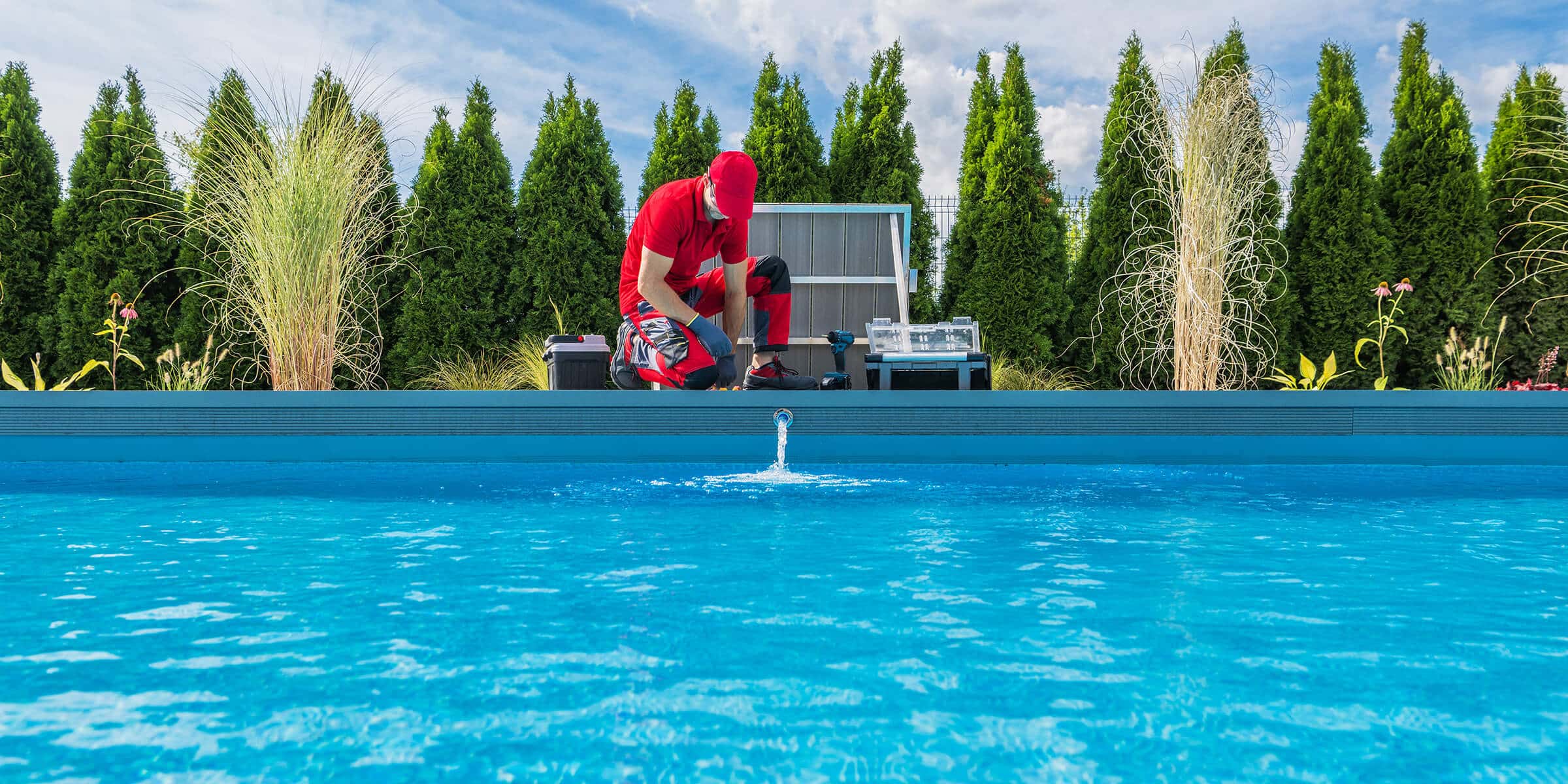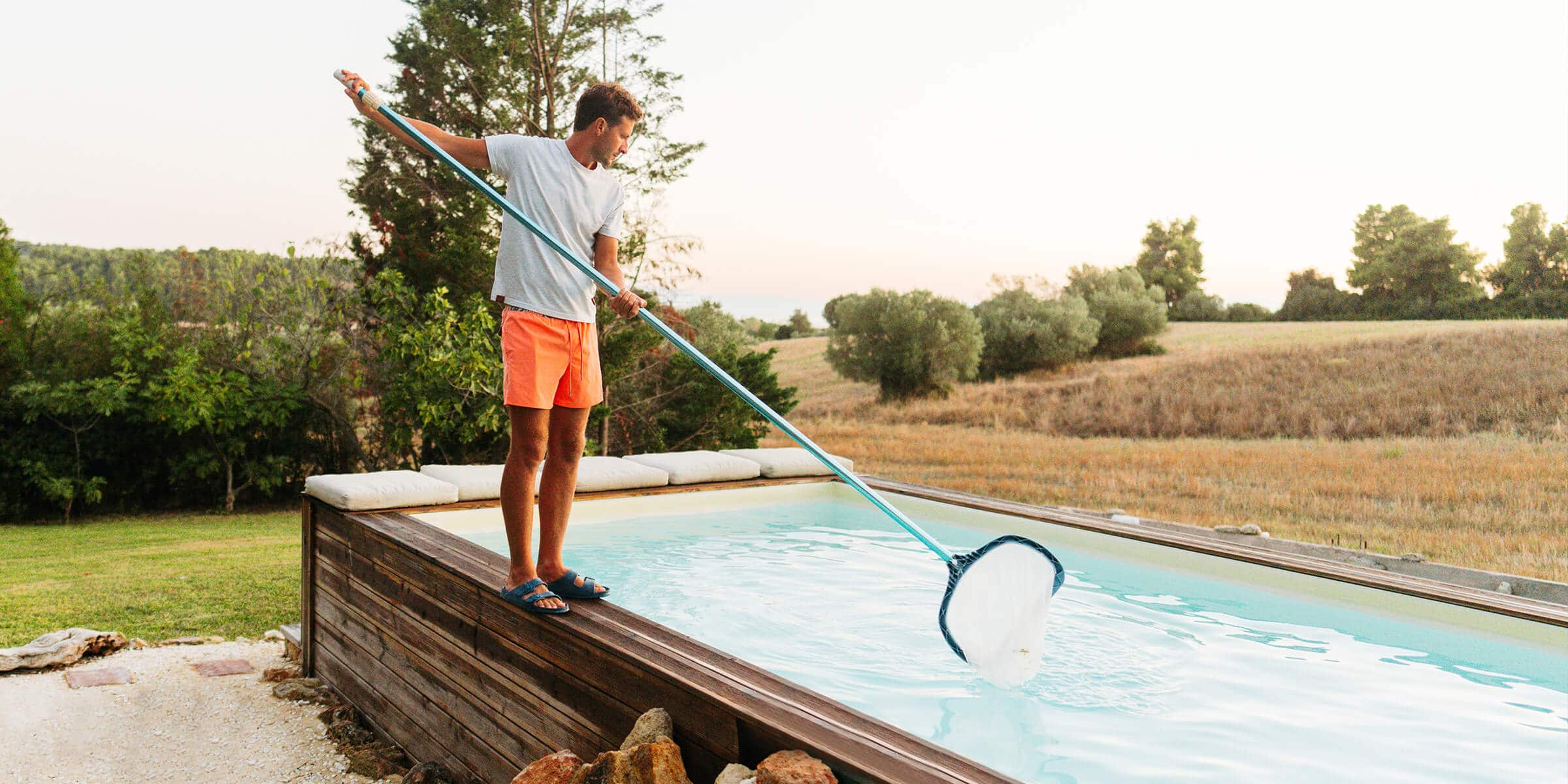What shape is better for a swimming pool? Which one is more beautiful? These seemingly straightforward questions open the floodgates to a fascinating exploration of form, function, and personal expression in backyard design. The shape of your swimming pool isn't just an aesthetic choice—it fundamentally influences how you'll use your aquatic retreat, how it interacts with your landscape, and yes, even how much time you'll spend maintaining it versus actually enjoying it.
The Classic Rectangle: Timeless for Good Reason
Let's kick things off with the OG of pool designs—the rectangular pool. There's a reason this shape has dominated American backyards since the post-war swimming pool boom. According to residential architecture experts, rectangular pools remain the most installed shape, accounting for roughly 60% of all residential pools.
The rectangular pool's enduring popularity isn't just about tradition—it's rooted in practical benefits that are hard to beat:
- Versatility: Whether you're doing laps, playing volleyball, or hosting a pool party, the rectangle accommodates virtually every aquatic activity.
- Space efficiency: Rectangles maximize swimmable area within a given footprint.
- Easier covering: Safety covers, solar blankets, and automatic covers all install more easily on rectangular pools.
- Maintenance simplicity: Cleaning tools, especially robotic pool cleaners like the Xbenbot Hydro-Puls, navigate rectangular pools more efficiently, with fewer obstacles to impede thorough cleaning.
That last point deserves special attention. The Hydro-Puls, with its advanced navigation system, excels in rectangular pools where its cleaning algorithms can establish efficient, systematic patterns. It's like the difference between vacuuming a square room versus one with odd angles and nooks—one simply allows for more methodical coverage.
But let's address the elephant in the pool deck—some homeowners find rectangles boring. The good news? Even minor modifications like rounded corners or a single curved edge can add visual interest while maintaining most of the practical benefits.
The Freeform Fantasy: When Nature Inspires Design
On the opposite end of the spectrum sits the organic, freeform pool—those naturalistic designs that mimic lakes, lagoons, and other bodies of water that clearly didn't consult a geometry textbook before taking shape.
Landscape design publications note that freeform pools create a softer, more natural aesthetic that can blend harmoniously with lush landscaping. They're particularly popular in tropical and resort-style backyards where rigid geometry would feel out of place.
The freeform pool's aesthetic advantages include:
- Customization potential: No two freeform pools are identical, giving you a truly unique water feature.
- Landscape integration: Curved edges create natural planting pockets that rectilinear pools don't offer.
- Visual flow: Organic shapes draw the eye around the landscape rather than stopping it at harsh angles.
- Illusion of space: Strategic curves can make a modest pool appear larger and more inviting.
However, before you dive headfirst into freeform fantasies, consider the practical tradeoffs. Cleaning these irregular shapes traditionally required more effort—the pool equivalent of trying to vacuum under an irregularly shaped coffee table.
This is where modern technology saves the day. The Xbenbot Hydro-Puls uses advanced sensors and AI-driven navigation to adapt to irregular pool shapes, reaching areas that older automatic cleaners might miss. Its intelligent mapping capabilities learn your pool's unique contours, ensuring that even the most creative freeform design remains pristine without excessive hands-on maintenance.
The Geometric Middle Ground: Modern Angles and Shapes
For those caught between rectangle traditionalism and freeform expressionism, geometric pools offer a compelling middle path. Think L-shapes, lazy-Ls, T-shapes, and figure-8 designs that combine straight lines with deliberate angles or curves.
Home design trends show these geometric hybrids gaining popularity, particularly among homeowners seeking a contemporary aesthetic that still offers practical functionality.
The advantages of these intermediate shapes include:
- Functional zoning: Different sections can serve different purposes (shallow play area connected to a deeper lounging section, for example).
- Architectural harmony: These shapes often complement modern home architecture better than purely organic forms.
- Practical innovation: They maintain many of the cleaning and covering benefits of rectangles while adding visual interest.
- Space solutions: L-shapes and similar designs can navigate around obstacles or maximize awkward yard layouts.
From a maintenance perspective, these pools present a middle ground as well. Their deliberate angles and curves are more predictable than fully freeform designs, making them amenable to systematic cleaning approaches. The Hydro-Puls excels here too, as its programmable cleaning patterns can be optimized for these structured geometric variations.
The Kidney Bean: The Comfortable Compromise
No discussion of pool shapes would be complete without mentioning the kidney bean—that iconic midcentury design that graced countless backyards during the suburban swimming pool explosion of the 1950s and 60s.
The kidney shape's staying power isn't just nostalgia. This design offers practical benefits that explain why it remains a popular choice according to swimming pool construction statistics:
- Natural division: The inward curve naturally separates shallow and deep ends without awkward transitions.
- Wind protection: The curved shape disrupts wind patterns across the water surface, reducing evaporation and heat loss.
- Deck optimization: The inward curve creates a natural focal point for deck furniture and gathering spaces.
- Cleaning efficiency: Unlike more complex freeform designs, the kidney's single curve is predictable enough for efficient automated cleaning.
For maintenance, the kidney represents the sweet spot between strict geometry and freeform expressionism. Its single, sweeping curve is easily navigated by advanced robotic cleaners like the Hydro-Puls, which can methodically cover both the curved and straight portions without getting trapped or missing spots.
The Lap Pool: When Function Leads Form
For the fitness-focused homeowner, the lap pool offers a specialized solution that prioritizes exercise over lounging. These long, narrow rectangles—typically at least 30 feet in length but just 8-10 feet wide—have become increasingly popular as health and wellness trends influence home design decisions.
Lap pools offer distinct advantages:
- Space efficiency: They can fit in narrow side yards or spaces where traditional pools wouldn't work.
- Exercise focus: Their design optimizes the swimming workout experience.
- Modern aesthetic: Their minimalist form complements contemporary architecture.
- Lower water volume: Less water means lower chemical and heating costs.
From a maintenance perspective, lap pools are among the easiest to clean. Their simple shape allows robotic cleaners like the Xbenbot Hydro-Puls to establish efficient back-and-forth patterns with minimal obstruction. The reduced water volume also means faster filtration cycles and more efficient chemical distribution.
The Cleaning Consideration: Shape Matters More Than You Think
Now, let's talk turkey about a factor that too often gets overlooked in the shape discussion: maintenance reality. The most beautiful pool in the world quickly loses its charm when it becomes a cleaning nightmare.
Pool shapes directly impact cleaning efficiency in several ways:
- Corner accessibility: Sharp corners can trap debris and are harder for automated systems to clean thoroughly.
- Surface area ratio: Complex shapes have more surface area relative to water volume, requiring more cleaning attention.
- Navigation complexity: Intricate designs with multiple curves, angles, or level changes challenge automated cleaning systems.
This is precisely where technology like the Xbenbot Hydro-Puls Robotic Pool Cleaner changes the equation. Unlike basic suction-side or pressure-side cleaners, the Hydro-Puls uses advanced mapping and navigation to adapt to your pool's specific shape, reaching areas that simpler systems might miss.
Its intelligent programming identifies obstacles, optimizes cleaning patterns for different shapes, and ensures thorough coverage regardless of design complexity. This technological advantage essentially frees you to choose your pool shape based on aesthetic preferences and functional needs rather than cleaning constraints.
The Regional Influence: Location Shapes Preferences
Interestingly, pool shape preferences show distinct regional patterns across America. According to market research on outdoor living trends, these geographical preferences often reflect both climate conditions and cultural influences:
- Southwest: Freeform and resort-style pools dominate in Arizona and Southern California, where desert landscapes and outdoor living culture embrace natural-looking water features.
- Northeast: Rectangular and geometric pools are more common, complementing traditional architecture and maximizing usable space during shorter swim seasons.
- Southeast: Kidney and lagoon-style pools flourish in Florida and the Gulf Coast, where tropical aesthetics and year-round swimming favor organic designs.
- Midwest: Practical geometric shapes prevail, often with features like volleyball areas that maximize recreational value during the limited summer months.
These regional trends reflect practical adaptations to local conditions as much as aesthetic preferences. In windy areas, for instance, curved shapes help reduce evaporation and heat loss, while in cooler regions, straight-sided pools maximize sun exposure and heating efficiency.
Beauty vs. Function: Finding Your Perfect Balance
So back to our original questions: What shape is better? Which one is more beautiful? The honest answer is that "better" depends entirely on your specific priorities, and "beautiful" is whatever makes you smile when you look out your window.
Consider these factors when making your decision:
- Primary use: Lap swimming favors rectangles; family play might benefit from a freeform with varied depths.
- Yard integration: How will the shape complement your landscape and home architecture?
- Maintenance reality: Are you willing to invest in advanced cleaning technology like the Hydro-Puls to maintain a more complex shape?
- Long-term satisfaction: Which design will you still love a decade from now?
Remember that beauty doesn't have to come at the expense of function. With modern robotic cleaning technology, even the most creative pool shapes can remain pristine with minimal effort. The Xbenbot Hydro-Puls effectively democratizes pool shape choices, freeing you to select based on aesthetics and function rather than cleaning concerns.
The Bottom Line: Your Pool, Your Rules
After all the expert opinions, trend analyses, and practical considerations, the perfect pool shape boils down to this: it's your backyard, your investment, and your daily view. Choose the shape that speaks to your sense of beauty while accommodating your lifestyle needs.
What makes a pool truly beautiful isn't just its shape but how it enhances your life—creating space for morning exercise, afternoon play, or evening relaxation. The most stunning design is ultimately the one that transforms from a water-filled cavity into the backdrop for countless family memories.
And with advanced maintenance solutions like the Xbenbot Hydro-Puls, you can spend less time cleaning that perfect shape and more time enjoying it—regardless of whether you chose a practical rectangle, an expressive freeform, or anything in between.
After all, the most beautiful pool shape is the one you actually have time to swim in.




Leave a comment
This site is protected by hCaptcha and the hCaptcha Privacy Policy and Terms of Service apply.